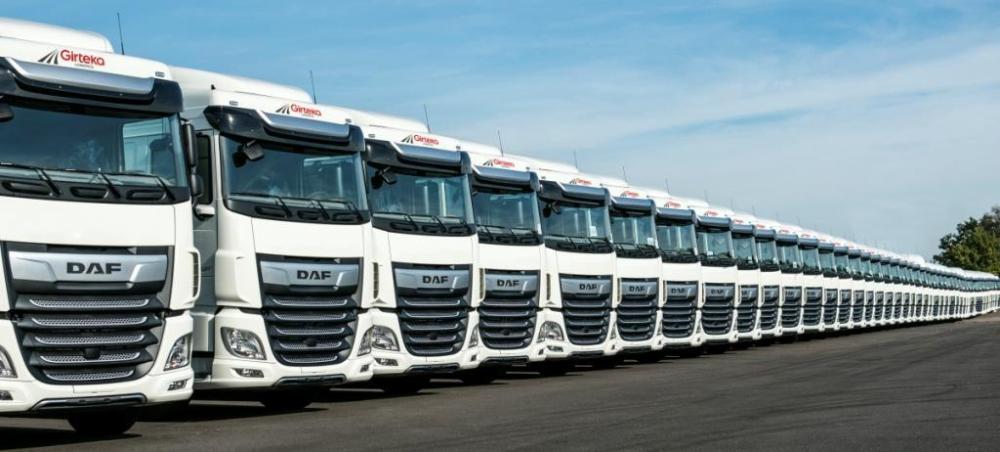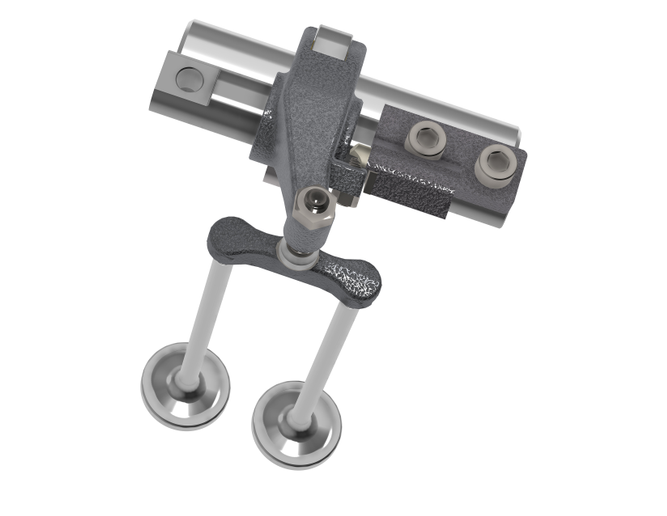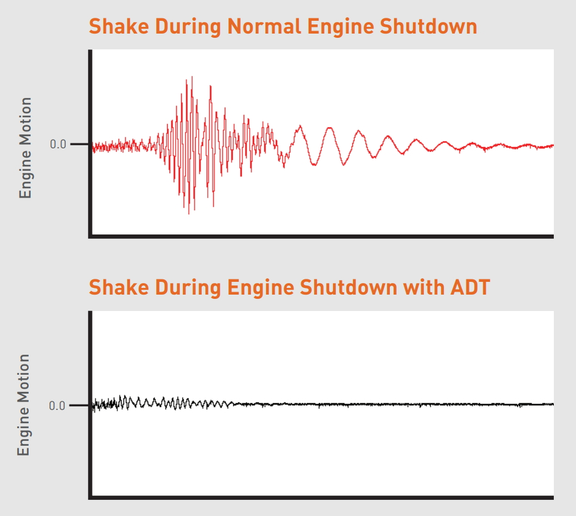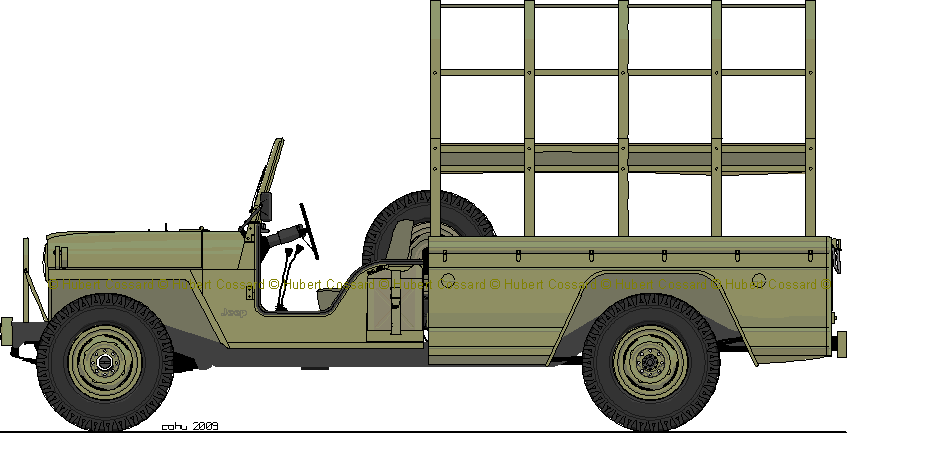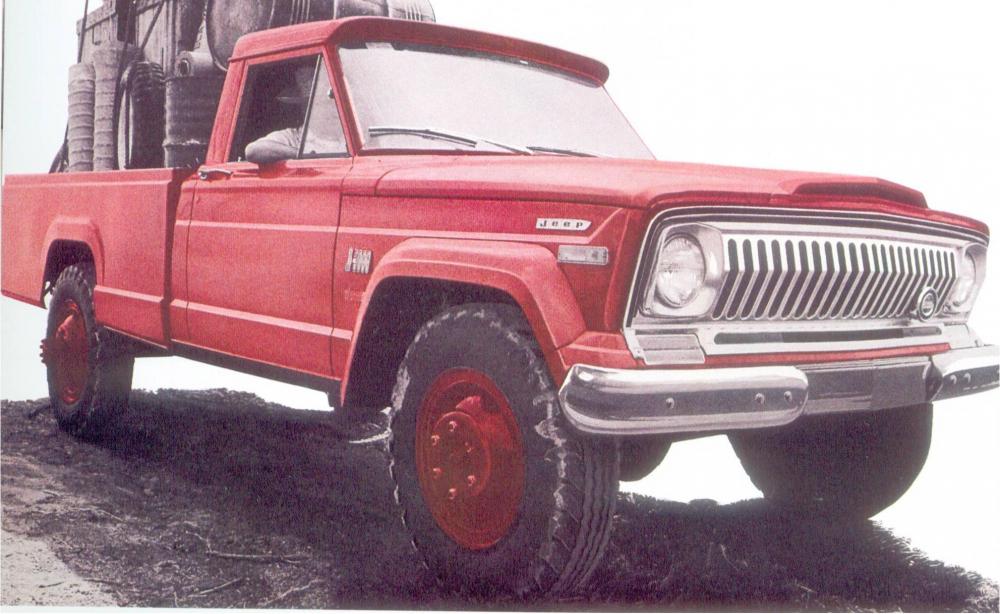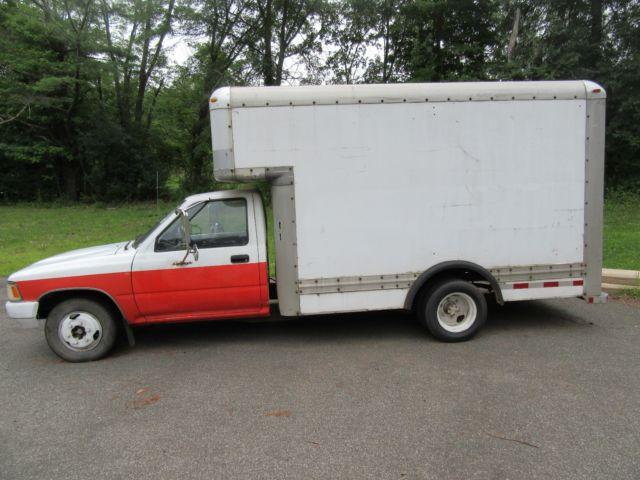
kscarbel2
Moderator-
Posts
18,549 -
Joined
-
Days Won
112
Content Type
Profiles
Forums
Gallery
Events
Blogs
BMT Wiki
Collections
Store
Everything posted by kscarbel2
-
Ford Trucks International Press Release / November 16, 2018 .
-
Another 1,500 DAF XF trucks for Girteka Logistics
kscarbel2 replied to kscarbel2's topic in Trucking News
Well done DAF ! -
DAF Trucks Press Release / November 27, 2018 Based on outstanding in-service experience, leading European transport company Girteka Logistics has ordered a further 1,500 DAF XF trucks. Earlier this year, Girteka Logistics has taken delivery of an initial 500 DAF XF tractors. “The trucks from DAF have performed even better than expected,” said Edvardas Liachovičius , CEO of Girteka Logistics. “They are extremely reliable, deliver unmatched fuel efficiency and are highly comfortable for our drivers. With these 1,500 new DAF trucks, we can continue to build on our plan to further expand our business throughout Europe.” Since its foundation in the mid-90s, Girteka Logistics – with its headquarters in Vilnius, Lithuania – has developed into an industry leading European transport company. Its modern fleet consists of over 5,600 trucks, 5,800 trailers and more than 13.000 employees. DAF XF – surpassing expectations “Our decision to opt for the first batch of 500 DAF XF trucks followed comprehensive market research”, added Edvardas Liachovičius. “In daily practice, the vehicles even surpass our high expectations in every aspect. Not only from a business point of view, but also from the perspective of the drivers who love the highly comfortable cab and the great driving characteristics. In addition, the DAF trucks support our efforts to reduce our CO2 footprint. The new XF sets a new standard in fuel efficiency, which is directly related to lowest CO2 emissions.” Highest fuel efficiency The 1,500 DAF XF Girteka Logistics trucks will be equipped with the 12.9 litre PACCAR MX-13 engine (355 kW/480 hp) in combination with the new TraXon automated gearbox. The trucks have the latest technologies on board, including Predictive Cruise Control, Predictive Shifting, Lane Departure Warning, AEBS and Forward Collision Warning. For maximum uptime, Girteka Logistics has opted for service intervals of up to no less than 200,000 kilometres. Strong recognition of DAF’s trucks “We are delighted that leading transport operator Girteka Logistics has again opted for the new DAF XF – International Truck of the Year 2018 – to further expand its impressive fleet”, said Richard Zink, member of the Board of Management and director Marketing and Sales. “The fact that the decision is driven by the excellent experiences of Girteka with the DAF XF, illustrates the truck’s outstanding quality, reliability, efficiency and driver comfort. In addition, the new order is a great recognition of our professional dealer network throughout Europe.” .
-
ZF's AS Tronic is perhaps the world's finest heavy truck AMT. Note at 1:14 the two countershaft design. As I've mentioned before, and can be confirmed by any relevant Mack engineers, they were planning an AMT variant of the "world's best" triple-countershaft Mack Maxitorque transmission, but Volvo Group killed the project. .
-
If one uses increased levels of heat treatment and heavier bearings, also easily done but of course with added costs, a single countershaft is doable. For on-road, the Mercedes-Benz Powershift 3 is an acceptable single countershaft AMT (sold in North America as the Detroit DT12). But I prefer twin countershafts.
-
Almost every new technology launches in North America was introduced 5 to 8 years before in Europe. American's want low price, so we get decontented low-cost trucks (and cars), versus what is sold in Europe. You'll realize this when attending the IAA show in Germany. The truckmakers can't offer the new tech in North America until they're forced to by regulation, or until such time customers are willing to pay up for it. Even the China truck market (world's largest) is seeing features not yet offered in the US market. I myself like a good looking truck.......and am also focused on rugged/durable, as well as fuel economy, overall engineering, comfort, durability, parts costs and service.
-
Optishift is the right idea, but Voith's VIAB is light years ahead of it. . .
-
But the Mack brand M-drive, a rebadged Volvo I-shift, only has one countershaft. Can one work? Obviously it's possible with precautions taken, but my personal preference from experience is to divide the load stress between two. Eaton and market leader ZF, for example, all have two. On Eaton, we've seen almost 4 jumps in tech since their original AMT.....be sure you try their current product before your judge.
-
I like the export version CJ-10 pickup more. No-nonsense pickup like the LandCruiser 70 Series pickup (https://www.toyota.com.au/main/landcruiser-70). There's a nice sized market in North America for the more affordable Land Cruiser 70 Series (versus the luxury Land Cruiser 200), but Toyota fails to grasp that. .
-
This is the one with the cab and bed mounted on a Dodge W250 chassis? Really like it. .
-
I just noticed that our very own DailyDiesel (Eric) did a video on the CJ-10 the other month. .
-
Paul, is this job going to result in a new video series? Everyone enjoyed the last one.
-
Mack B model wrecker tow truck - $6500 (Bucks county pa
kscarbel2 replied to justintocci's topic in Trucks for Sale
https://philadelphia.craigslist.org/cto/d/mack-model-wrecker-tow-truck/6753868709.html -
Mack B model wrecker tow truck - $6500 (Bucks county pa
kscarbel2 replied to justintocci's topic in Trucks for Sale
With that air cleaner, it's a diesel. -
I'm a consumer. I have never demanded.....nor do I want.....self-driving and autonomous vehicles from the auto industry.
-
The CJ-10 airport tug I knew about. However I didn't know there were other versions of the CJ-10. And that Nissan Diesel SD33 is the same engine that was optional in the International Harvester Scout (1976-1979). I almost bought one of those. http://www.fourwheeler.com/project-vehicles/129-1210-the-elusive-jeep-cj-10/ http://www.fourwheeler.com/features/1508-big-ten-the-last-cj-10-jeep-encyclopedia/
-
Jacobs Diesel Engine Decompression System Can Save Fuel
kscarbel2 replied to kscarbel2's topic in Trucking News
The people at Jacobs never fail to impress.......ever. -
Heavy Duty Trucking (HDT) / November 28, 2018 Jacobs Vehicle Systems has introduced Active Decompression Technology (ADT), which the company says enables heavy-duty commercial vehicles to benefit from an engine stop-start system and eliminating engine-shake at both start-up and shutdown. In addition to improving fuel economy and reducing emissions, ADT also improves cold engine starts, reduces loading and wear on engine components during start-up, and makes start-up faster, according to Jacobs. Jacobs says the new ADT device incorporates valve actuation technologies proven over many millions of miles and can be cost-effectively added to many engine platforms. Stop-start engine technology, which automatically switches off the engine when it would otherwise be idling, is widely adopted by automotive manufacturers, however, it is less common in heavy-duty commercial vehicles. This is largely due to the intrusive engine and cabin-shake experienced whenever a heavy-duty diesel engine starts or stops, and because of the cost of technologies needed to mitigate increased wear-and-tear on the starter motor, ring-gear, and battery. ADT significantly reduces these issues. Extensive testing has shown that ADT reduces the magnitude of engine-shake during shutdown by 90%, which is when vibrations transmitted to the cabin are of greatest frequency and strength. This has the additional benefit of preventing disturbance to drivers sleeping in cabs overnight when there are automated engine starts and stops to maintain battery charge. The ADT device is automatically activated by the engine control unit (ECU) whenever the engine shuts down or starts up, and works by keeping the engine valves open and the cylinders decompressed. When switching off the engine, it “coasts” to a smooth shutdown without causing the cab to shake. When starting up, the engine is kept in a decompressed state which decreases cranking torque by 40% and allows the engine to spin up to twice its normal speed for smoother starting, faster priming of the fuel system, and decreased wear on the starter gear, fly wheel and other components. This can also allow the use of smaller and lighter batteries, cables, and starter. By enabling the engine to be turned-over while decompressed, ADT also improves start-ups in cold temperatures by enabling the engine to reach its critical compression ignition speeds. When combined with supplemental air inlet heaters, ADT also enables the engine cylinders to be pre-warmed without the engine load from compression; especially useful when freezing temperatures have reduced battery levels. When high cranking speed is reached, the engine compression is reactivated and cylinder-fueling begins. “ADT is another development of Jacobs’ well-proven valve actuation technologies to deliver another set of benefits,” said Steve Ernest, vice president of engineering and business development at Jacobs Vehicle Systems. “Some OEMs will be interested in ADT because it enhances vehicle refinement by eliminating engine-shake and cabin-shake. Other customers – particularly those whose vehicles endure heavy stop-start cycles - will welcome the reduced component load, fuel economy and emissions advantages.” . .
-
The learning never ends. I had no idea that VAM, Jeep's licensee in Mexico, produced this troop carrier which placed the front of a CJ5 atop a J4000 chassis with its pickup bed......the J3M. .
-
Note the heavy-duty front rims on this Mexican production J-series, and the locally-produced rear bed. .
-
Hino Enters Heavy Duty Market with XL Series Truck
kscarbel2 replied to kscarbel2's topic in Trucking News
Of course Toyota used to offer a 1-ton cab & chassis in the US market with either single or dual tire configuration, and it sold very well. Penske Leasing ran thousands. . -
Isn't that a J20 Paul? I didn't think they built a 1-ton in 1981. I'd like to acquire a clean M715.
-
You said Peterbilt 388.....that's a highway truck chassis. You'd need a 367.
-
GM's Ammann vacates president role to lead AV unit Michael Wayland, Automotive News / November 29, 2018 General Motors President Dan Ammann will step down from his role to become CEO of the automaker's Cruise autonomous vehicle unit. The move -- effective Jan. 1 -- emphasizes the importance of the operations to the future of GM, which plans to launch a public self-driving ride-hailing fleet in 2019. It also places Ammann, a former Wall Street banker who joined GM as its treasurer in 2010, to potentially lead a spin-off and initial public offering of Cruise, which analysts have speculated is eventually coming. A successor for Ammann, 46, will not be named. GM CEO Mary Barra, 56, will absorb his responsibilities over global regions and GM Financial, while CFO Dhivya Suryadevara, 39, takes responsibility of the automaker's corporate development, the automaker said today. Cruise's current CEO and co-founder, Kyle Vogt, will become president and chief technology officer of the operations. Ammann and Vogt will "set the strategic direction" for Cruise. Ammann on Thursday described it as a "partnership" with Vogt leading technical side of the business and Ammann focusing on "commercialization and other scaling from a corporate point of view." Ammann, who will be based in San Francisco, declined to comment on the possibility of a spinoff or IPO. "All the energy right now is focused on getting to the point of initial commercial deployment," Ammann told Automotive News, later saying the company could be "open-minded to other opportunities down the road." Bloomberg reported earlier this year that GM was talking with banks and internally about its eventual options for Cruise, including a public offering, spinoff or separate stock listing. Ammann said he is "thrilled" to be dedicating 100 percent of his time and energy to Cruise, which is currently valued at $14.6 billion following recent investments. “It’s our belief that this technology will only have the impact that we want it to have on the world if it’s deployed at massive scale,” Ammann said. “So, we need to be preparing for that as we continue the technology as we prepare initial commercialization.” Spearheaded by Ammann, GM acquired San Francisco-based Cruise Automation in 2016. He has since overseen its expansion from 40 employees to more than 1,000 at the GM subsidiary. “Dan’s talents, I think, would have been underutilized if he was the CEO when there was just 40 people at the company,” Vogt said on Thursday. “To me, it’s sort of the sweet spot where the skills that Dan has will really complement what we have on our leadership team today and take it to the next level. I think the timing is pretty good.” Ammann relinquished other roles as president, including leading Cadillac and global portfolio planning, to GM product chief Mark Reuss in June. The changes follow several major announcements in recent months about GM's autonomous work, including a $2.25 billion investment by the SoftBank Vision Fund of Japan and plans for Honda Motor Co. to invest $2.75 billion in the operations. "These appointments further demonstrate our commitment to transforming mobility through the safe deployment of self-driving technology and move us closer to our vision for a future with zero crashes, zero emissions and zero congestion," Barra said in a Thursday statement. "As we move toward commercial deployment, adding Dan to the strong team led by Kyle is the next step." The announcement also comes three days after Barra and Suryadevara announced a major restructuring of the company's North American production operations and plans to cut 15 percent of the automaker's salaried workforce, including 25 percent of its global executives. Those actions were in part driven by GM’s plans to devote more resources to emerging technologies such as self-driving and autonomous vehicles.
-
Fitzgerald's website doesn't show a Peterbilt 300 series vocational model offering (e.g. 367)...................https://www.fitzgeraldgliderkits.com/peterbilt/ However they do offer the Kenworth T800...........https://www.fitzgeraldgliderkits.com/kenworth/kenworth-t800/ As well as the Western Star 4900SB.................https://www.fitzgeraldgliderkits.com/western-star/western-star-4900-sb/ I would buy as many Fitzgerald Series 60-powered T800s as you can afford, before the government brings their business to a halt. This is a truck....an engine.... that you can make a living with.
BigMackTrucks.com
BigMackTrucks.com is a support forum for antique, classic and modern Mack Trucks! The forum is owned and maintained by Watt's Truck Center, Inc. an independent, full service Mack dealer. The forums are not affiliated with Mack Trucks, Inc.
Our Vendors and Advertisers
Thank you for your support!


